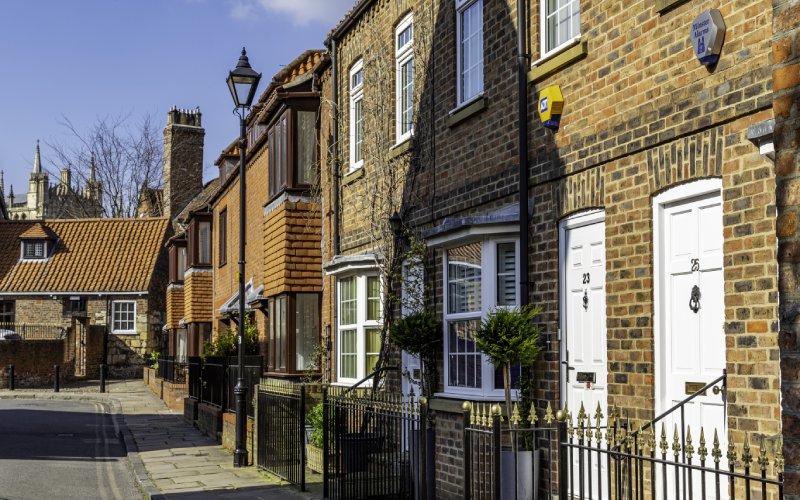Rising property prices, steep moving costs, and growing household energy bills are pushing many homeowners to improve rather than move.
Whether you’re dreaming of a modern kitchen, planning a home extension, or looking to boost your property’s energy efficiency, finding the right way to fund improvements matters.
Getting the work done might cost less than you think with the right approach.
While personal loans and credit cards often come with high interest rates, remortgaging to fund home improvements could offer a more affordable way to transform your living space. Plus, well-planned improvements should add more value than they cost.
But remortgaging isn’t right for everyone. This guide helps you understand your options and shows you how to make the best choice for your situation.
What Does Remortgaging for Home Improvements Mean?
When you remortgage to pay for home improvements, you borrow extra money against your property by switching to a new mortgage deal.
Remortgaging involves moving to a new lender, where the new mortgage is larger that the one you have now. This extra money goes towards your home improvements.
Let’s say your home’s worth £500,000 and you have £150,000 left on your mortgage.
If you want £100,000 for improvements, you’d remortgage for £250,000. The new mortgage pays off the old one and gives you £100,000 in the bank for your project.
Many UK homeowners choose this route because mortgage rates tend to be lower than other types of borrowing. According to UK Finance, about 25% of remortgages in 2023 included additional borrowing, with home improvements being the most common reason.
Read more: A guide to borrowing for home improvements
Would Remortgaging Work for Your Project?
Several factors affect whether remortgaging makes sense:
Your property’s value really matters.
Most lenders look at the loan-to-value ratio (LTV) after including the extra borrowing. Say your home’s worth £500,000 and you want to borrow £250,000 in total – that’s 50% LTV. Generally, you’ll get better rates with lower LTVs (under 60-70%).
The type of improvements affects lending decisions too.
Adding an extension or converting your loft? – Lenders view these positively as it should increase your property’s value.
Basic decorating or repairs? – You might find other borrowing options work better.
For smaller projects under £25,000, personal loans might make more sense, especially if you can repay them quickly. The total interest cost could be lower, even with a higher rate, because you’re borrowing for a shorter time.
Related reading: How to Finance a House Extension
Get access to expert brokers and over 100 lenders
Getting Your Sums Right
Before applying, work out exactly what you need.
Most people underestimate improvement costs – materials have shot up lately, and good builders often book months ahead.
Get detailed quotes from at least three contractors.
Add 10-15% for unexpected issues – they pop up in almost every project. Remember to factor in architect fees, planning costs, and building control if needed.
Additional reading: www.checkatrade.com/cost-guides/house-extension-cost/
Check Your Current Mortgage Terms
Before rushing into a remortgage, understanding your existing mortgage terms could save you thousands of pounds.
Many homeowners miss this step and end up paying unnecessary charges.
Early Repayment Charges (ERCs)
Most fixed-rate mortgages come with early repayment charges during the initial fixed period. These penalty charges typically work on a sliding scale:
- 5% of the loan amount in year one
- 4% in year two
- 3% in year three
- 2% in year four
- 1% in year five
For example, if you’ve got a £200,000 mortgage and you’re in year two of a five-year fix, you might face an ERC of 4% – that’s £8,000 if you pay the loan back early. Add this to other remortgage costs, and it could make your home improvements much more expensive than necessary.
Timing Your Remortgage
You can apply for a new mortgage deal 3-6 months before your current one ends. This means you can lock in a rate early but only complete the remortgage after your ERC period expires.
Example: Your five-year fix ends in October. You could start talking to brokers in April, apply in May, but set the completion date for October – avoiding ERCs while securing your new rate.
Your broker will be able to co-ordinate this for you but bear in mind that most mortgage offers only last for 6 months.
Other Mortgage Features to Check:
- Whether you can make overpayments without charges
- If your lender allows additional borrowing
- Any arrangement fees you’ve paid that might be refundable
- Your current interest rate and monthly payments for comparison
Looking at your annual mortgage statement or speaking with your current lender will clarify these details. Some lenders offer better rates to existing customers, so it’s worth checking their deals before looking elsewhere.
Smart Timing
If you’re planning improvements but face high ERCs, consider:
- Getting quotes and planning permission while waiting for your fixed term to end
- Saving money towards your project in the meantime
- Using short-term funding that you can refinance once your ERCs expire
- Speaking to a broker about whether the cost of ERCs might be worth paying if you can secure a significantly better rate

Planning Permission and Building Regulations
Lenders want to know your improvement plans are legal and properly approved. For example, if you’re planning an extension, you’ll usually need planning permission unless it falls under permitted development rights.
Building regulations apply to most structural work, electrical installations, and changes affecting energy efficiency. Your local authority’s building control department needs to approve the work – something many homeowners overlook until it’s too late.
Some energy improvements qualify for reduced VAT or government grants. A new boiler, insulation, or solar panels might cost less than you expect with current incentives.
Read more: www.checkatrade.com/expert-advice/planning-permission-extension/
Making a Strong Application
Remortgaging means making a full mortgage application with a new lender.
Your income and outgoings get looked at to assess affordability. They’ll check you can afford higher repayments even if interest rates rise. Most want to see your last three months’ bank statements and payslips.
If you’re self-employed, you’ll need two or three years of accounts. Some lenders accept less trading history if you can show strong, consistent income.
Your credit record matters too. Check it before applying – small issues like incorrect addresses can cause delays.
The lenders property valuation plays a big part. Some lenders send someone to inspect, others might use desktop valuations. For major improvements, they’ll want to know the estimated value after the work’s done.
Read more: A Complete Guide to Remortgaging
Understanding Your Financing Options
While remortgaging suits many homeowners, it’s helpful to have an idea about alternatives. Each option has its merits depending on your circumstances.
Personal Loans
Banks and building societies offer unsecured personal loans up to £25,000, usually with terms from one to seven years. You’ll get a fixed interest rate and regular monthly payments, making budgeting straightforward. While rates are typically higher than mortgages, you might pay less interest overall due to the shorter term. They can work well for smaller projects like bathroom refits or garden landscaping.
Further Advance
Your current mortgage lender might offer additional borrowing without needing a full remortgage. These ‘further advances’ can be set up quite quickly since the lender already knows you. Rates usually match or sit close to your current mortgage rate. However, you might miss out on better deals from other lenders.
Secured Loans
Also called second charge mortgages, these let you borrow against your property while keeping your current mortgage in place. They make sense if you’ve got a great rate on your existing mortgage or face high early repayment charges. The secured loan will be from a new lender, they don’t take too long to set up, and the rates typically sit between personal loans and standard mortgages.
Credit Cards
For small improvements under £5,000, a 0% purchase credit card might work. Some offer up to 24 months interest-free, giving you time to pay off the balance. Just remember to clear the debt before the 0% period ends, as standard rates can exceed 20% APR.
Home Improvement Loans
Some specialist lenders offer loans specifically for property improvements. They often release money in stages as work progresses, which helps manage larger projects. These can work particularly well for major renovations where costs come in phases.
Bridging Loans
Bridging loans are really only worthwhile if you are borrowing larger amounts of money, as they can be expensive to set up. However, they can be arranged quickly and are often used to meet financial deadlines or to provide some temporary funding.
Savings
Using savings avoids lender interest charges completely. However, consider whether depleting your emergency fund makes sense – unexpected costs often pop up during improvement projects.
The right choice often combines different options.
For example, you might use savings for the deposit on an extension while remortgaging for the main costs. A mortgage broker can help you compare the total costs of different approaches and find the best mix for your situation.
Working with a Mortgage Broker
Finding the right remortgage deal can be tricky.
Different lenders have different attitudes to home improvements – some love them, others are more cautious. This also extends to your employment position and credit history.
A mortgage broker knows which lenders suit your situation.
They’ll look at your whole picture – not just the numbers. Maybe you’re planning more improvements later, or you might move in a few years. Good brokers factor all this in when recommending deals.
Most brokers offer free initial chats. They’ll explain their fees upfront and often save you money overall through better deals and avoiding unnecessary applications.
Making It Happen
Ready to explore remortgaging for your improvements?
Start by:
- Getting accurate project costs together – detailed quotes work better than rough estimates.
- Checking your current mortgage details, especially any early repayment charges.
- Looking at your latest property valuation and local house prices.
Then speak with a mortgage broker who can look at your full situation. They’ll help you understand whether remortgaging makes sense and find the best way forward.
Want to know more?
Our mortgage partners offer free consultations with no pressure to proceed. They’ll help you understand all your options and explain exactly how they could help with your plans.
Frequently Asked Questions
Lenders will first need to consider your property’s equity, income, and affordability.
Typically, you can borrow up to 90% of your property’s value minus your existing mortgage.
The process normally takes 4-8 weeks from application to completion, though this can vary depending on the lender and your circumstances.
Read more: How long does it take to remortgage?
Yes, but you may face early repayment charges which could make it expensive.
It maybe less expensive to defer remortgaging until the ERC period has ended.
Read more: Can you remortgage early?
Yes this is normally fine. Lenders may want further details if the project value is high.
A further advance is additional borrowing from your current lender, without changing your existing mortgage terms.
In our opinion, yes. Brokers can access deals not available directly and help structure your application for the best chance of success.
Read more: What are the advantages of using a mortgage broker?
Not always. While a remortgage does require a solicitor to make changes regarding the mortgage deed and Land Registry records, you can often use the lender’s solicitor for this.
Read more: Do you need a solicitor to remortgage?


